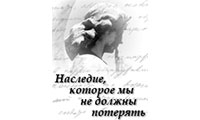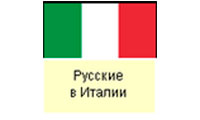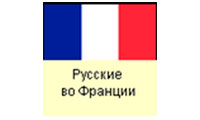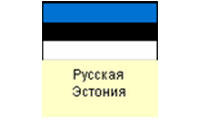Vasily Alikhanov
Vasily Alikhanov (25th of February 1843, Vologda Governorate, Russian Empire – 17th of November 1908, Riga, Russian Empire) – a merchant, a donor.
It is known that Vasily Alikhanov arrived in Riga in 1859, at the age of thirteen, from the Vologda Governorate, which suggests that he was probably born in 1846 rather than in 1843, as engraved on his tombstone. At the same time, the obituary published upon his death in 1908 stated that he passed away in his 62nd year, which again does not correspond to the official date of his birth. However, such discrepancies were quite common in 19th-century Russia.
Upon his arrival in Riga, the young Vasily Alikhanov became an apprentice in the harness trade of Zaytsev and later worked in a similar business owned by Volkov. Apparently, he took a liking to this line of work, and after gaining sufficient experience, he opened his own harness shop in the summer of 1879 in a prestigious district at 1 Kaļķu (Lime) Street, in a building owned by Mrs. Bychkova. The firm “V. S. Alikhanov” soon gained popularity among customers, and business prospered. After some time, Alikhanov acquired a house of his own on the same Kaļķu Street, this time at No. 11, where his shop was also located.
In its elegant showcase, one could see harnesses for various kinds of horse tack, crafted by master Chinarev. The harnesses were refined and of excellent workmanship. A wide range of leather goods was also offered for sale. By the turn of the century, V. Alikhanov had been accepted into the merchant class.
In 1899, his goods were widely exhibited at an agricultural fair, and in 1901 his products were displayed at the exhibition dedicated to the 700th anniversary of Riga, held on the Esplanade.
Among Riga’s Russian merchants, Alikhanov was regarded as a solid businessman and a generous benefactor, as evidenced by numerous publications in the Riga press.
He promptly responded to the needs of Orthodox churches and parishes. Together with his wife, Matrona, he was a member of the council of the Sts. Peter and Paul Brotherhood, founded in 1867 with the blessing of Archbishop Platon (Gorodetsky) of Riga and Mitau.
In 1888, Alikhanov joined the committee for the construction of a chapel in front of the railway station, dedicated to the miraculous deliverance of the Imperial family during the train crash of October 17 (29), 1888, near Kharkov.
He also made a substantial contribution to the construction of the Edinburgh Church in honor of the Kazan Icon of the Mother of God (Dzintari, designed by architect A. P. Kiselbash). The church was consecrated on June 23, 1896, by Archbishop Arseny (Bryantsev) of Riga and Mitau, together with Archpriest Alexey (Aristov), rector of the Riga Theological Seminary, Archpriest Andrey (Kanger), and priests Vladimir (Pliss) and Ioann (Yakovlev). Many benefactors were present, including M. Mansurova, as well as the first churchwarden, V. Alikhanov.
Alikhanov made generous donations to many Orthodox churches, including the Church of St. Alexander Nevsky in Riga. In the last years of his life, he was a member of the parish trusteeship board of that church.
V. Alikhanov also considered it his duty to participate in other Russian civic initiatives. He was repeatedly elected to the board of the Third Riga Mutual Credit Society, served on the council of the Riga Russian Artisans’ Guild (1899), and in the same year joined the committee of the Auxiliary Society of Russian Merchant Clerks. He was also a member of the Russian Merchant Nicholas Society (1903) and of the Russian Club.
Furthermore, the first public screening of the Lumière brothers’ cinematograph in Riga took place in a three-story mansion with an attic, which no longer survives, that belonged to V. Alikhanov. The screening, held on May 28, 1896, is regarded by many film historians, including the noted virologist and cinema scholar Yuri Perevoshchikov, as the birthday of Riga’s cinema. Shortly afterward, Riga’s first film advertisement appeared in the press: “A marvelous achievement! A sensation!!! Splendid! The Lumière Brothers’ Cinematograph…”
Vasily Alikhanov passed away on November 17, 1908. Later, his wife, Matrona Alikhanova (née Mayorova, 25 March 1855 – 17 October 1929), was laid to rest beside him at Pokrov Cemetery. According to her Latvian passport, her date of birth was officially recorded as March 20, 1857.
After the death of V. Alikhanov, his heirs continued his business. The shop was particularly successful during the First World War, until the German occupation of Riga. In the 1920s, due to the rapid transition to automobile transport, the shop had to be closed. The widow moved to a house at 14 Mazā Ķēniņu Street, Apartment 1, where she spent her final years. As a result of the hostilities in 1941, this street ceased to exist, and the Līvu Square was later built on its site.
At present (in the 2020s), descendants of the merchant Alikhanov live in the city of Yaroslavl, Russian Federation. They recently visited Riga and paid respects at their ancestors’ grave (Section V, No. 25).
Svetlana Vidyakina
Revisions and additions to the material were made by Tatyana Feigmane.
Sources of information:
Düna Zeitung”, № 116. 1896-27-05. С. 4;
Городской дневник. – Рижский вестник, № 117, 29-05-1896; № 118, 30-06-1896;
Рижские Епархиальные Ведомости, 1904,№ 14, 15;
Городской дневник. – Рижский вестник, № 284, 31-12-1898; № 287, 31-12-1899; № 9, 13-01-1900; № 287, 31-12-1903; № 286, 29-12-1906, № 80,06-04-191;
На сельскохозяйственной выставке. – Рижский вестник, № 192, 16-06-1899;
Отдел торговли и экономический. – Рижский вестник, № 74, 30-03-1902;
Городской дневник. – Рижский вестник, № 258, 19-11-1904;
Рижские Епархиальные Ведомости, 1904,№ 14, 15;
Городской дневник. – Рижский вестник, № 265, 18-11-1908 ;
Городской дневник. – Рижский вестник, № 265, 18-11-1908;
Городской дневник. – Рижский вестник, № 80, 06-04-1913;
Рижская предвокзальная часовня. – Вера и жизнь. Духовный журнал. № 8, 01-08-1925;
Рижское вспомогательное общество русских торгово-промышленных служащих и хозяев в городе Риге. Основано в 1859 году. Очерк 75-летней деятельности. Рига, 1934.

















